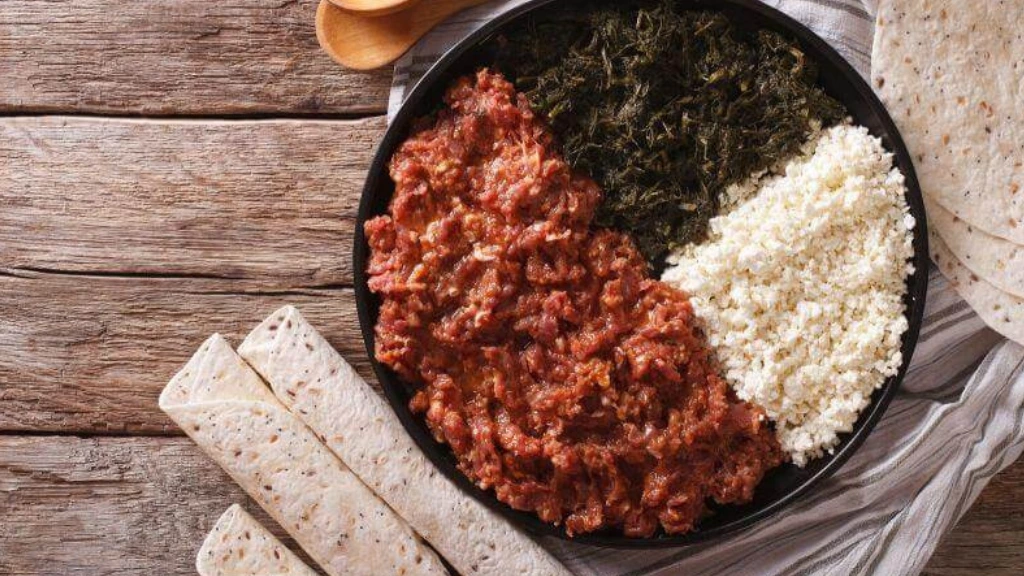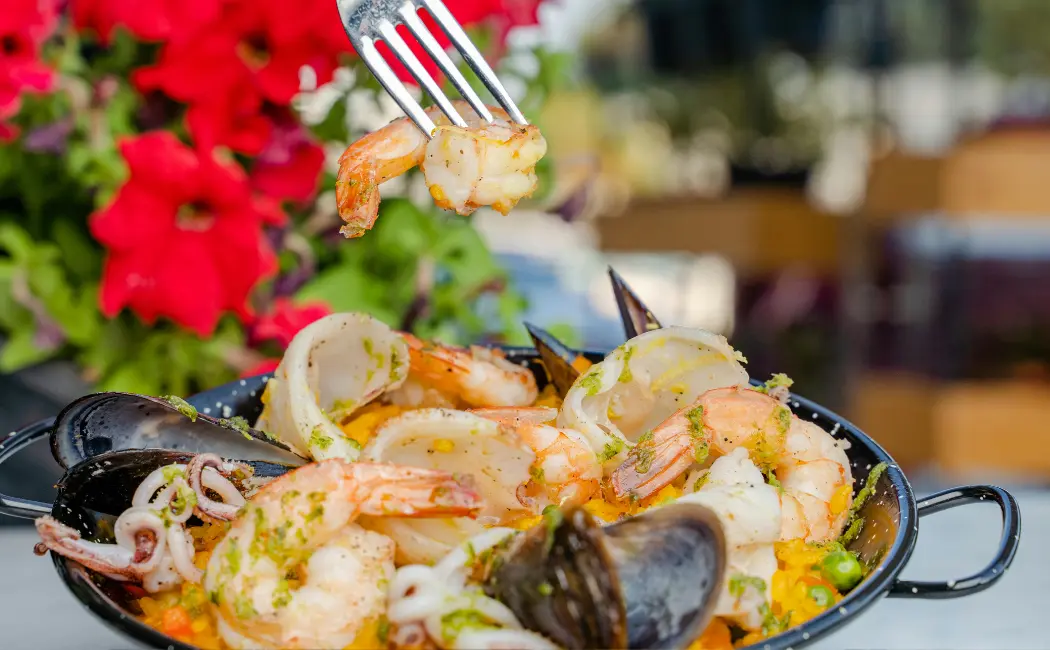In the diverse and colorful world of global cuisine, few dining experiences are as warm, rich, and deeply rooted in tradition as Ethiopian cuisine.
If you’re a foodie in the U.S. looking for something different, Ethiopian food offers a perfect opportunity to explore vibrant flavors while experiencing a style of eating that’s both communal and culturally significant.
You May Also Like: Best Places to Get Shave Ice in Hawaii: A Guide to Island Bliss
This article will delve into the essential components of Ethiopian food, its significance, and how sharing a meal is at the heart of this cuisine.
The Essence of Communal Dining
One of the most distinctive aspects of Ethiopian cuisine is how meals are shared. Unlike the individual plated meals common in many Western cultures, Ethiopian meals are typically served on large platters that everyone shares. This communal style of eating fosters a sense of togetherness, conversation, and connection among diners. It’s customary for family and friends to gather around a single large dish and eat together with their hands, using a special flatbread called injera to scoop up flavorful stews and vegetables.
Injera isn’t just a utensil; it’s an integral part of the meal, offering both taste and texture. Made from teff flour, this spongy, slightly tangy bread serves as the foundation upon which various stews (known as “wats”) and other dishes are served. The communal eating style underscores Ethiopian culture’s emphasis on sharing, generosity, and togetherness.
Injera: The Staple of Ethiopian Meals
At the heart of every Ethiopian meal is injera, a flatbread that’s unlike any other. Its unique, spongy texture and mildly sour flavor come from the fermentation of teff flour, a nutritious grain native to Ethiopia. Injera serves a dual purpose—it’s both your plate and your utensil.
Teff is gluten-free, making injera suitable for a wide range of dietary needs, which is a bonus for U.S. diners looking for gluten-free options. When paired with rich, spicy stews and vegetables, injera perfectly balances the flavors and textures of Ethiopian dishes. As you tear off pieces of injera and scoop up the food, it becomes a tactile and immersive part of the dining experience.
Flavors That Dance on Your Palate
Ethiopian cuisine is known for its bold, earthy flavors, many of which are derived from a combination of indigenous spices. Central to Ethiopian cooking is berbere, a spice blend that includes chili peppers, garlic, ginger, basil, and fenugreek. This blend gives dishes like doro wat (a spicy chicken stew) their signature kick, while mitmita, another fiery spice mix, often adds an extra layer of heat.
Ethiopian stews, known as wats, are essential to the cuisine. They’re often slow-cooked and simmered with lentils, vegetables, or meats. Common dishes include shiro wat (a chickpea stew), key wat (a beef stew), and misir wat (spiced lentils). These dishes are served on the injera platter, where they meld together to create a rich, satisfying meal. Each bite offers a unique combination of textures and flavors, from the tangy injera to the spiced, hearty stews.
Vegetarian Delights
For vegetarians and vegans, Ethiopian cuisine is a treasure trove of options. Due to the religious traditions of Ethiopia, especially the fasting practices of the Ethiopian Orthodox Church, many meals are plant-based. During fasting periods, followers avoid meat and animal products, which has led to the development of an array of delicious vegetarian dishes.
Some of the most popular vegetarian offerings include misir wat (spicy red lentils), atkilt wat (a cabbage and carrot stew), and gomen (collard greens). These dishes are full of flavor and offer a perfect balance of protein and vegetables, making Ethiopian food both nutritious and delicious for anyone seeking plant-based meals in the U.S.
Coffee Ceremonies: The Cultural Finale
No Ethiopian meal is complete without coffee—bunna—which is not just a beverage but an essential cultural practice. Ethiopia is known as the birthplace of coffee, and the coffee ceremony is a deeply symbolic and social event. The process of making coffee is long and intentional, often involving roasting the beans over an open flame, grinding them, and brewing the coffee in a special pot called a jebena.
Participating in a coffee ceremony is as much about community as it is about the drink itself. The ritual is usually performed after meals and serves as a way for friends and family to come together to talk, share stories, and reflect. For U.S. diners, experiencing an Ethiopian coffee ceremony is a rare opportunity to witness a tradition that has been passed down through generations.
Ethiopian Dining in the U.S.
Ethiopian restaurants have grown in popularity across the U.S., especially in cities like Washington, D.C., Los Angeles, New York, and Atlanta, which have thriving Ethiopian communities. In these eateries, you can experience the authentic flavors and communal dining style that defines Ethiopian cuisine.
For many U.S. diners, Ethiopian food is a revelation. The combination of rich, spicy stews and the unique texture of injera is unlike anything else in the culinary world. Beyond the food itself, it’s the experience of sharing a meal with others that truly sets Ethiopian cuisine apart. Sitting around a platter of injera and scooping up food with your hands creates a bond between diners, making the meal about much more than just nourishment.
The Growing Appeal of Ethiopian Cuisine
As more people in the U.S. seek out new and exciting dining experiences, Ethiopian cuisine is becoming a popular choice for adventurous eaters. The communal dining style, the bold use of spices, and the emphasis on fresh, plant-based ingredients make Ethiopian food appealing to a wide range of tastes and dietary preferences.
In addition, Ethiopian cuisine offers a rich cultural experience that connects diners to a centuries-old tradition of sharing food. Whether you’re enjoying a spicy doro wat with friends or savoring a flavorful vegetarian platter, Ethiopian food invites you to slow down, appreciate the flavors, and enjoy the company of those around you.
Conclusion
Ethiopian cuisine is far more than just a collection of flavorful dishes—it’s a dining experience that emphasizes community, tradition, and culture. Whether you’re drawn in by the bold spices, the unique texture of injera, or the communal style of eating, Ethiopian food offers a journey of flavors and experiences that is truly one-of-a-kind. For U.S. foodies looking to expand their culinary horizons, Ethiopian cuisine is a must-try, offering both a taste of Africa and a connection to a deeper cultural tradition.










